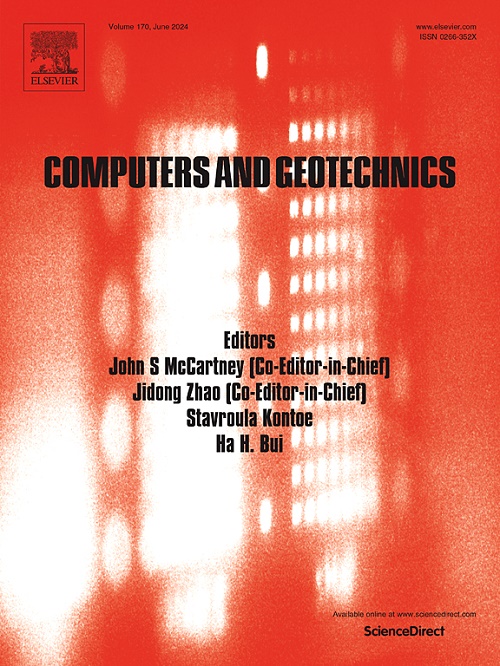Load transfer and failure mechanisms of GRS bridge abutments: Insights from DEM simulations
IF 5.3
1区 工程技术
Q1 COMPUTER SCIENCE, INTERDISCIPLINARY APPLICATIONS
引用次数: 0
Abstract
This paper presents a discrete element method (DEM) investigation into the load transfer mechanisms and failure surfaces of geosynthetics reinforced soil (GRS) bridge abutments. A local strain-dependent reinforcement contact model is developed to accurately simulate the nonlinear tensile behavior of reinforcement. The study analyzes both the macroscopic deformation response and the microscopic fabric evolution of backfill soil under bridge load. The findings reveal that as the bridge load increases, the micro-bearing structure of the soil within the potential failure surface evolves through progressive loss of effective contacts, particle rotation, and fabric reorganization. These micromechanical phenomena underlie the development of shear bands and the global failure mechanism of GRS abutments. Furthermore, a parametric analysis is conducted to evaluate the effects of reinforcement stiffness, reinforcement vertical spacing, and backfill soil friction angle on failure surfaces of GRS abutments. The results demonstrate that higher reinforcement stiffness constrains failure surface development, while wider reinforcement spacing and lower soil friction angles lead to deeper and more pronounced failure surfaces. Overall, the study highlights the critical role of reinforcement-soil interactions and micromechanical processes in determining the deformation and failure surfaces of GRS bridge abutments.
求助全文
约1分钟内获得全文
求助全文
来源期刊

Computers and Geotechnics
地学-地球科学综合
CiteScore
9.10
自引率
15.10%
发文量
438
审稿时长
45 days
期刊介绍:
The use of computers is firmly established in geotechnical engineering and continues to grow rapidly in both engineering practice and academe. The development of advanced numerical techniques and constitutive modeling, in conjunction with rapid developments in computer hardware, enables problems to be tackled that were unthinkable even a few years ago. Computers and Geotechnics provides an up-to-date reference for engineers and researchers engaged in computer aided analysis and research in geotechnical engineering. The journal is intended for an expeditious dissemination of advanced computer applications across a broad range of geotechnical topics. Contributions on advances in numerical algorithms, computer implementation of new constitutive models and probabilistic methods are especially encouraged.
 求助内容:
求助内容: 应助结果提醒方式:
应助结果提醒方式:


